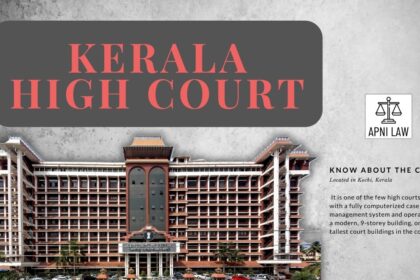Code: Section 58 BSA
Secondary evidence includes—
(i) certified copies given under the provisions hereinafter contained;
(ii) copies made from the original by mechanical processes which in themselves
ensure the accuracy of the copy, and copies compared with such copies;
(iii) copies made from or compared with the original;
(iv) counterparts of documents as against the parties who did not execute
them;
(v) oral accounts of the contents of a document given by some person who has
himself seen it;
(vi) oral admissions;
(vii) written admissions;
(viii) evidence of a person who has examined a document, the original of which
consists of numerous accounts or other documents which cannot conveniently be
examined in Court, and who is skilled in the examination of such documents.
Illustrations.
(a) A photograph of an original is secondary evidence of its contents, though the
two have not been compared, if it is proved that the thing photographed was the original.
(b) A copy compared with a copy of a letter made by a copying machine is secondary
evidence of the contents of the letter, if it is shown that the copy made by the copying
machine was made from the original.
(c) A copy transcribed from a copy, but afterwards compared with the original, is
secondary evidence; but the copy not so compared is not secondary evidence of the
original, although the copy from which it was transcribed was compared with the original.
(d) Neither an oral account of a copy compared with the original, nor an oral account
of a photograph or machine-copy of the original, is secondary evidence of the original.
—
Explanation of Section 58 BSA
Section 58 of the Bharatiya Sakshya Adhiniyam defines what constitutes secondary evidence. This section outlines the types of evidence that may be used to prove the contents of a document when the original (primary evidence) is unavailable due to loss, destruction, or other valid reasons.
This provision ensures that justice is not hindered solely due to the unavailability of original documents, while also maintaining a standard for what qualifies as reliable secondary proof.
Key Points:
-
Secondary evidence may be introduced only under circumstances permitted by law (e.g., when the original is lost, destroyed, or cannot be obtained).
-
It includes certified copies, mechanical reproductions, oral/written admissions, and expert analyses.
-
Not all copies or oral descriptions qualify as secondary evidence unless they meet specific conditions outlined in this section.
—
Illustration
Example 1: Certified Copies
A certified copy of a sale deed issued by the sub-registrar’s office is acceptable as secondary evidence under clause (i).
Example 2: Mechanical Copies
A fax or photocopy made directly from the original is acceptable as secondary evidence under clause (ii), provided its accuracy is ensured.
Example 3: Oral Account
A person who has read a contract and recalls its contents can testify about it if the original is lost, as per clause (v).
Example 4: Complex Documents
A financial expert who has examined voluminous ledger books may present a summary of findings as secondary evidence under clause (viii), especially when it’s not practical to bring all records to court.
—
Common Questions and Answers on Section 58 BSA
-
When can secondary evidence be introduced in court?
Secondary evidence may be presented when the original document is lost, destroyed, or otherwise unavailable, provided that the court is satisfied with the explanation for the absence of the original.
-
Are photocopies always considered secondary evidence?
Photocopies may qualify as secondary evidence if it can be shown that they were made from the original or from a reliable reproduction of the original.
-
Can someone testify about the contents of a document they saw?
Yes, under clause (v), a person who has seen and read the original document can give an oral account of its contents, if the original is not available.
-
Are admissions considered secondary evidence?
Yes. Both oral and written admissions about a document’s contents are included under clauses (vi) and (vii) of Section 58.
-
What about evidence based on bulk records?
If the original records are too voluminous to be conveniently brought to court, a qualified person may present findings based on their examination under clause (viii).
—
Conclusion
Section 58 of the Bharatiya Sakshya Adhiniyam provides a comprehensive framework for the admissibility of secondary evidence. It serves to bridge the evidentiary gap when primary evidence is unavailable, while ensuring that the sources of secondary evidence are reliable and trustworthy. By detailing multiple acceptable forms of secondary evidence—physical and oral—the section supports fair adjudication in diverse legal scenarios.
For more in-depth legal commentary and structured insights on Indian law, visit ApniLaw.








